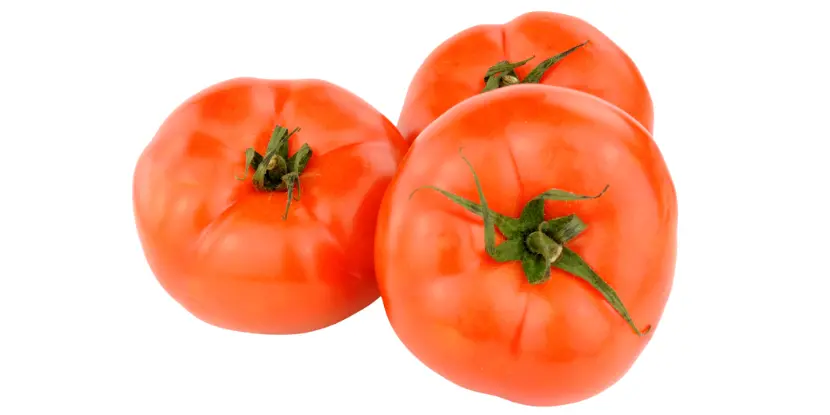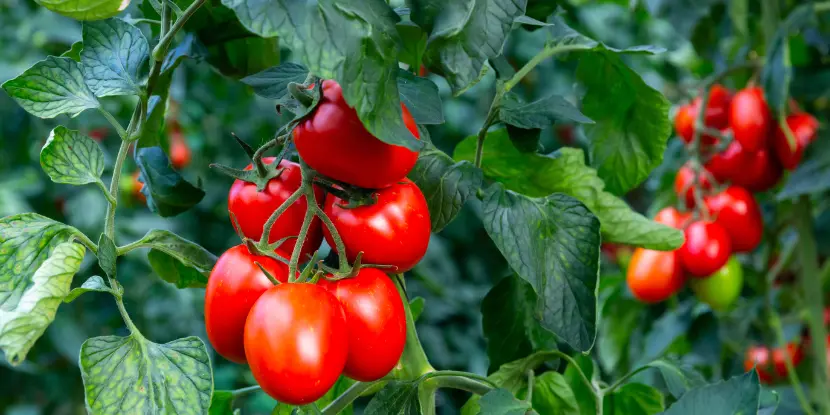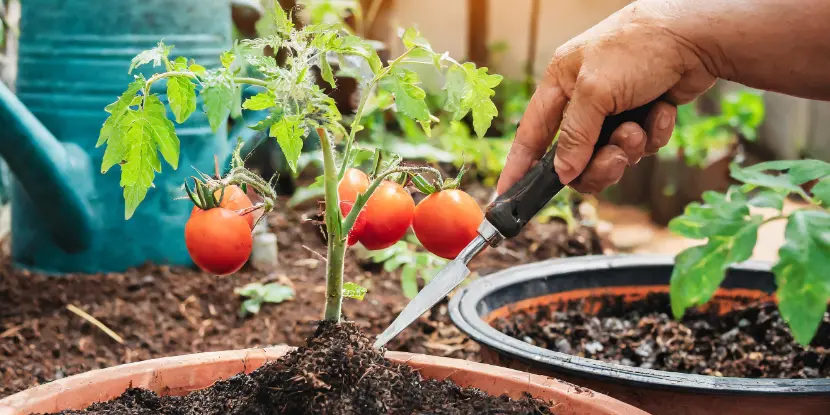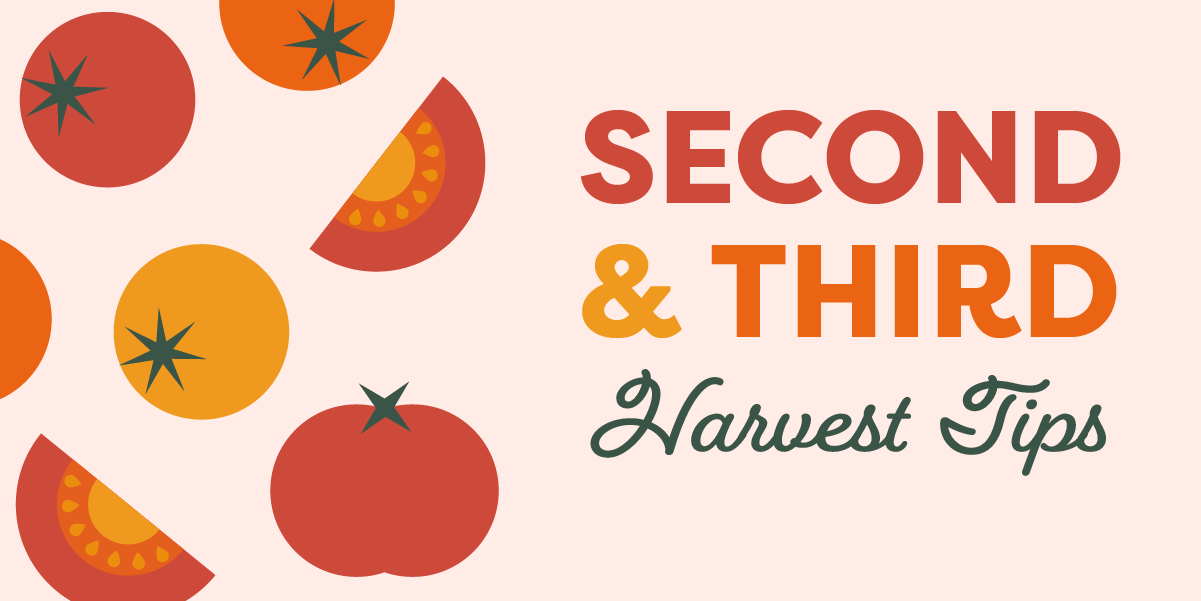Heat Tolerant Tomato Varieties
My best heat-tolerant tomato varieties began to bear ripe fruit in mid-August. Some fruit have weighed up to eight ounces. I set the plants in the garden during June, which was late for the spring crop and early for the fall crop.
Many gardeners are unfamiliar with Big Beef and Sunmaster tomato varieties.
- Big Beef was the 1994 All-American Selection Winner. It’s an indeterminate variety that matures in 73 days and has VFFNTA disease resistance. It yields an impressive 10 to 12-ounce smooth fruit with real old-time flavor and is considered one of the finest hybrids for home gardeners.
- Sunmaster sets best when the days are 87 to 96 degrees and nights are between 73 to 82 degrees F. It’s a determinate variety that matures in 72 days and has VFFNA disease resistance. It was developed for home gardeners in southern latitudes. The 7 to 8-ounce fruit is firm, smooth, delicious, and full of flavor with a good balance of sugar to acid.
- Celebrity was the 1984 All-American Selection Winner. It’s a determinate, highly productive variety that matures in 70 days and has VFFNTA disease resistance. The 7 to 8-ounce fruit is firm with exceptional flavor.
Fall Tomatoes
For the fall crop, varieties for medium size fruit are: Sunmaster, Heatwave, Carnival, Celebrity, and Better Bush. Those producing cherry size fruit are:
- Husky Red
- Sweet 100
- Patio

Ripe beefsteak tomatoes fresh from the garden.
I’ve moved my plants to larger pots, plan to set several in the garden, and the remaining ones in containers.
Tomato plants for summer and fall crops should have their lower leaves pruned and be set deep in the soil or potting mix. Some gardeners dig the hole extra deep and place crushed corn cobs and banana peelings in the bottom of it. Other gardeners may place some balanced fertilizer under each plant.
Plant-starter fertilizer should be applied around warm-season crops that must mature before cold weather. There are several commercial water-soluble fertilizers available. I use the treatment of 2, 4, 6, 8, and 10 teaspoons of milk with one cup of water per plant each week.
Additional fertilizer should not be applied until the plants have fruit that are one-half mature size. If plants are over fertilized, they will grow too large and bear less fruit. You should mulch around the plants to keep soil moist and prevent fruit from cracking from the stem.

Ripe plum tomatoes in a greenhouse.
Other Vegetables
If you plant cucumber and squash seeds, select early-maturing varieties. In fact, the early maturing varieties of all vegetable crops are usually more productive. Bush bean seeds should be planted before mid-September. Based on production, disease resistance and flavor, Derby variety was an All American Selection Winner.
Cool Season Crops
Cool season vegetable crops to seed later in the fall are: beet, carrot, celery, kale, kohlrabi, lettuce, radish, and spinach.
Cool season vegetable plants to set are: broccoli, Brussels sprouts, cabbage, cauliflower, and onions.

Tomato plants are prime candidates for container gardening.
FAQs: Growing Tomatoes for Multiple Harvests
Q: What are the best tomato varieties for multiple harvests in Southern California?
Cherry and grape tomatoes are excellent choices due to their quick maturing times. Heirloom varieties like San Marzano and Beefsteak also perform well in Southern California’s climate.
Q: When is the ideal planting time for tomatoes in Southern California for multiple harvests?
Planting in early spring, as soon as the last frost dates have passed, is ideal. For continuous harvests, consider succession planting every two weeks.
Q: How should I prepare the soil for growing tomatoes?
Enrich the soil with compost and a balanced, slow-release fertilizer to ensure a nutrient-rich environment for your tomatoes.
Q: How much sun do tomato plants need?
Tomatoes require at least 6 to 8 hours of direct sunlight daily for optimal growth and fruit production.
Q: What’s the best way to water tomato plants?
Deep, infrequent watering encourages root growth. Water the plants early in the morning to minimize evaporation and disease risk.
Q: How often should I fertilize my tomato plants?
Apply a balanced fertilizer every four to six weeks during the growing season to support continuous growth and fruiting.
Q: What are the common pests and diseases to look out for, and how can they be prevented?
Tomato hornworms and aphids are common pests. Neem oil and regular inspection can help manage them. For diseases like blight or wilt, ensure good air circulation and practice crop rotation.
Q: How can I support my tomato plants for optimal growth?
Use cages or stakes to support tomato plants. This keeps the plants upright and promotes air circulation, reducing the risk of diseases.
Q: Can tomatoes grow in containers, and what are the best practices?
Yes, tomatoes can thrive in containers. Ensure the pot is large enough (at least 5 gallons) and has proper drainage. Regular watering and fertilization are crucial.
Q: What’s the key to achieving multiple harvests throughout the season?
Practicing succession planting, proper care, and choosing fast-maturing varieties are essential for multiple harvests.
Q: How can I extend the growing season into the cooler months?
Using row covers or greenhouses can protect your plants from cool temperatures, extending the growing season.
Q: What should I do with tomato plants at the end of the growing season?
Remove spent plants to avoid attracting pests and diseases. Consider composting healthy plants to enrich your garden’s soil for the next season.

